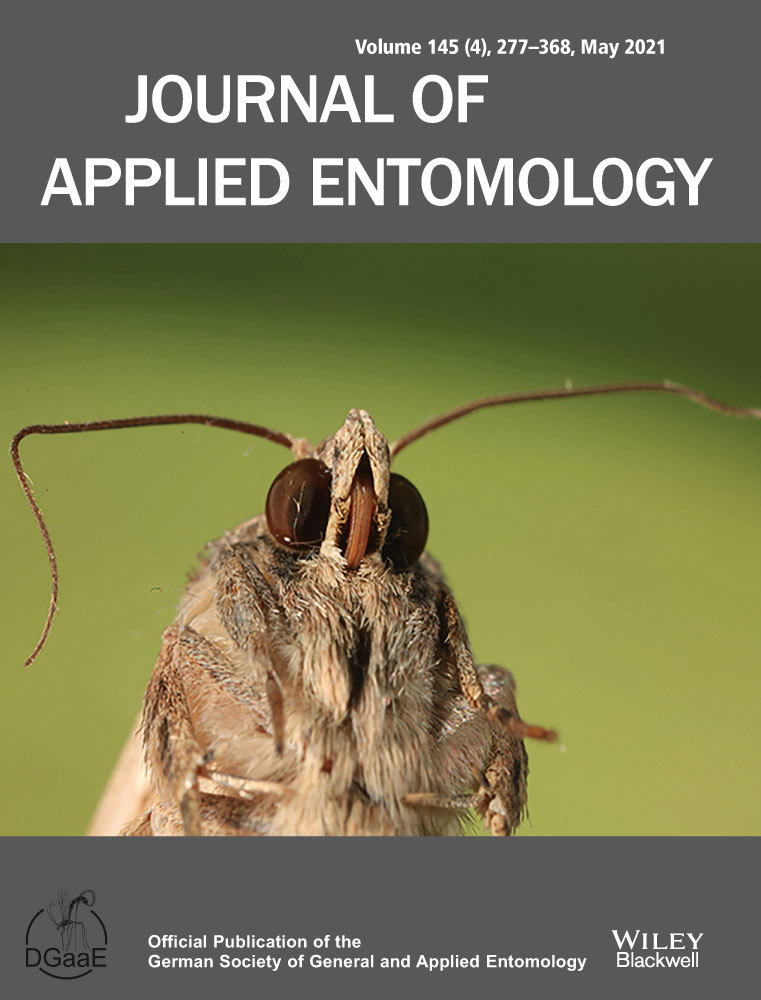Ver ítem
- xmlui.general.dspace_homeCentros Regionales y EEAsCentro Regional Santa FeEEA RafaelaArtículos científicosxmlui.ArtifactBrowser.ItemViewer.trail
- Inicio
- Centros Regionales y EEAs
- Centro Regional Santa Fe
- EEA Rafaela
- Artículos científicos
- Ver ítem
Use of plants by Myzus persicae in agroecosystems: Potential applications in conservation biological control
Resumen
Myzus persicae (Sulzer) is a highly polyphagous aphid species that attacks several economically important crop plants. Here, trophic webs involving M. persicae, its host plants and its parasitoids were described and quantified in wheat, oat and alfalfa agroecosystems from central Argentina, with special emphasis on the sub‐habitats where interactions occur: crops and adjacent field margins. Three fields cultivated with each crop species and their margins
[ver mas...]
Myzus persicae (Sulzer) is a highly polyphagous aphid species that attacks several economically important crop plants. Here, trophic webs involving M. persicae, its host plants and its parasitoids were described and quantified in wheat, oat and alfalfa agroecosystems from central Argentina, with special emphasis on the sub‐habitats where interactions occur: crops and adjacent field margins. Three fields cultivated with each crop species and their margins were sampled during three years; aphid abundance and mummification percentage were compared among crop plants and the diverse natural vegetation in the borders. Interactions were described using a quantitative food web approach, and abundance and mummification percentage e data were analysed using a generalized linear model. Four plant species present in the borders (Capsella bursa‐pastori, Rapistrum sp., Melilotus sp. and Trifolium repens) hosted M. persicae and its parasitoids. The alfalfa agroecosystem produced a significantly higher number of aphids than oat and wheat; however, in all cases, crops and borders sustained similar aphid abundance. A total of six Aphidiinae species attacked M. persicae, with no significant differences in the richness of parasitoid species between the borders and the crops, but with significant differences in parasitoid abundance, being higher in the crops. Mummification percentage were higher in crops than in the borders, with Lysiphlebus testaceipes, Aphidius colemani and A. ervi being the most abundant species. Almost 70% of M. persicae individuals were collected from fields borders, which highlights the importance of including these sites in studies of trophic interactions in crop fields.
[Cerrar]

Autor
Zumoffen, Leticia;
Ghiglione, Carla;
Signorini Porchiett, Marcelo Lisandro;
Salvo, Silvia Adriana;
Fuente
Journal of Applied Entomology (First published: 23 April 2021)
Fecha
2021-04
Editorial
Wiley
ISSN
0931-2048
1439-0418
1439-0418
Formato
pdf
Tipo de documento
artículo
Palabras Claves
Derechos de acceso
Restringido
 Excepto donde se diga explicitamente, este item se publica bajo la siguiente descripción: Creative Commons Attribution-NonCommercial-ShareAlike 2.5 Unported (CC BY-NC-SA 2.5)
Excepto donde se diga explicitamente, este item se publica bajo la siguiente descripción: Creative Commons Attribution-NonCommercial-ShareAlike 2.5 Unported (CC BY-NC-SA 2.5)

